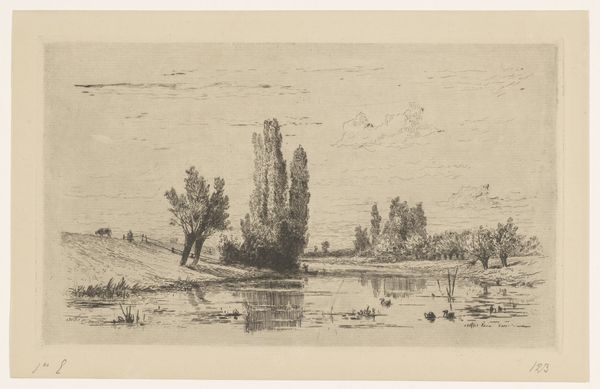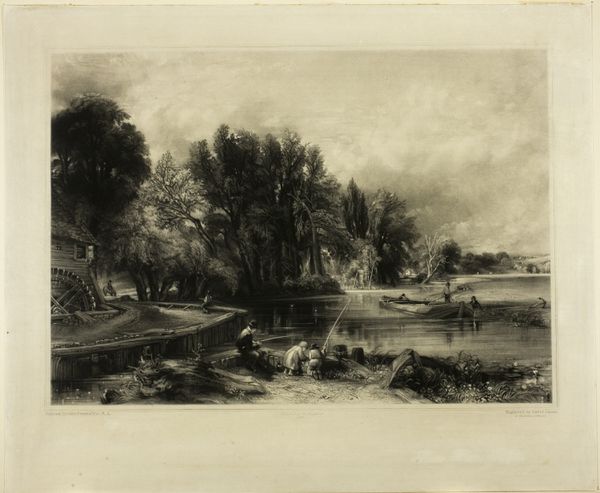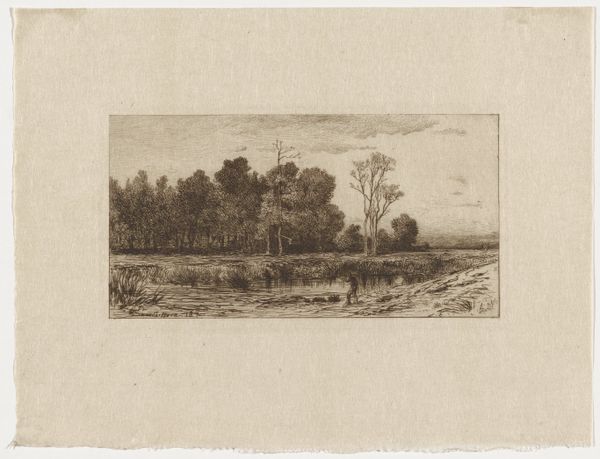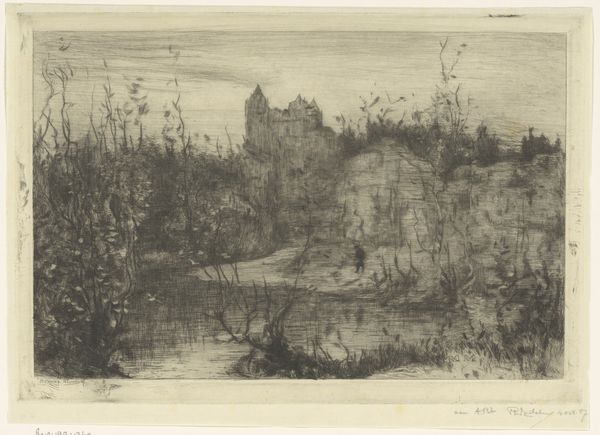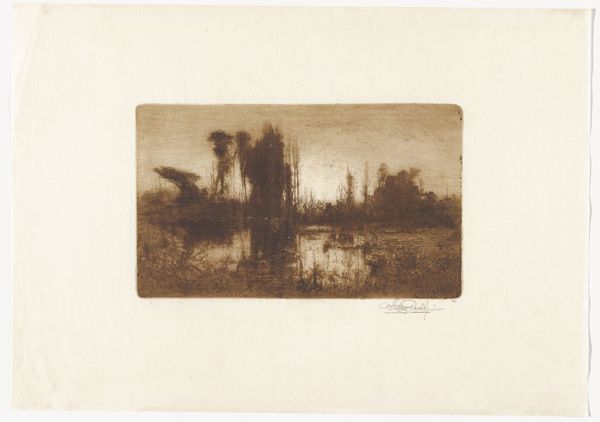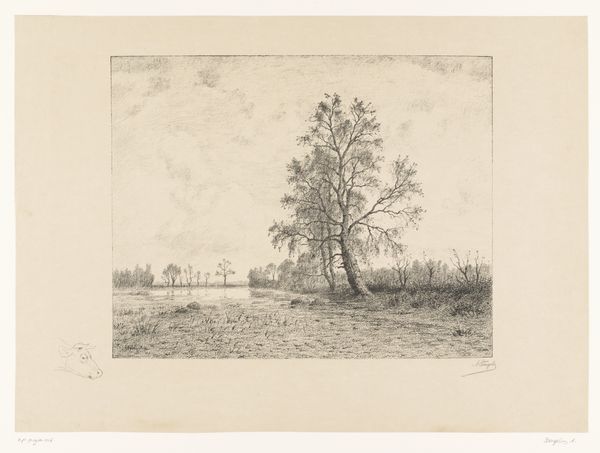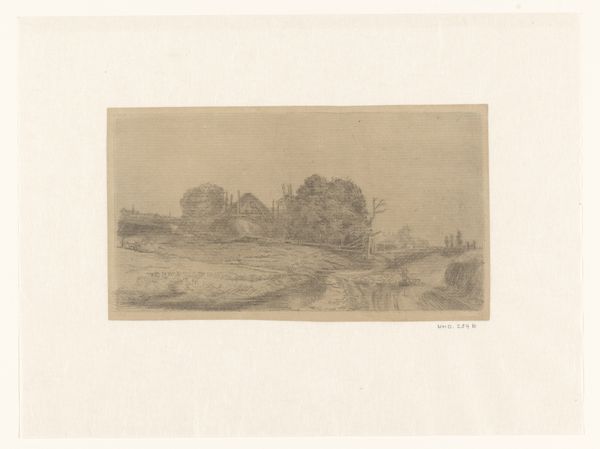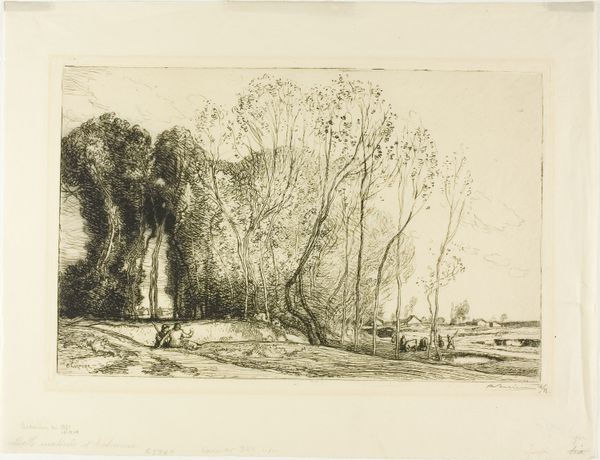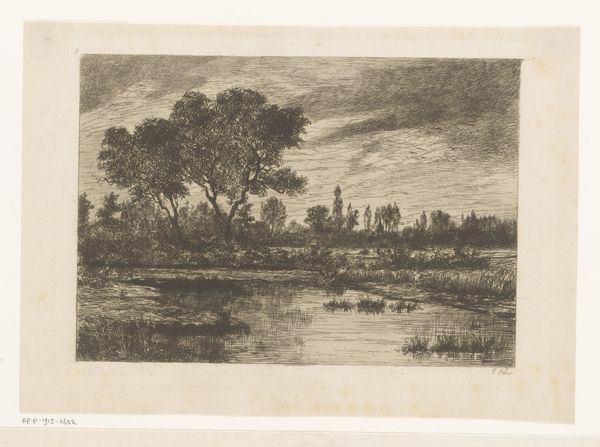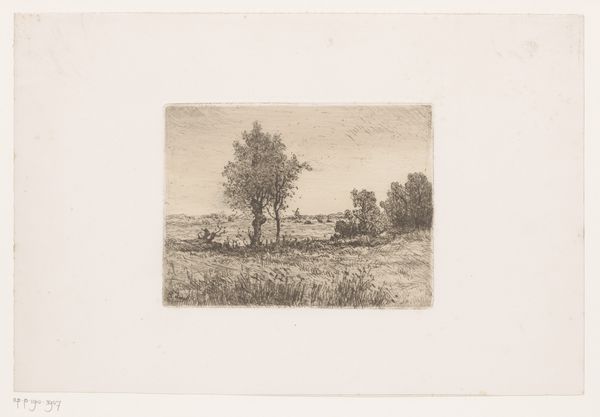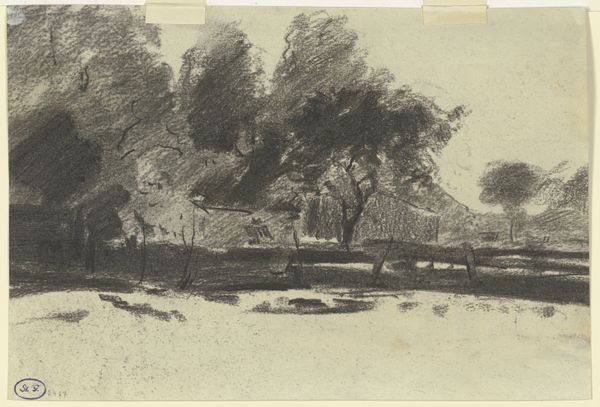
drawing, print, etching, paper
#
drawing
# print
#
impressionism
#
etching
#
landscape
#
etching
#
paper
Dimensions: 224 × 390 mm (image/plate); 370 × 506 mm (sheet)
Copyright: Public Domain
Curator: This etching, created by Stephen Parrish in 1880, is titled "On the Schroon — Evening" and now resides here at the Art Institute of Chicago. Editor: It's evocative, almost melancholic. The tones are subdued, creating this really pensive atmosphere. The dark foreground contrasts quite dramatically with what looks like a softer sky. Curator: Parrish was a master of capturing light and shadow, wasn’t he? The process of etching, scratching into the metal plate, then inking and pressing onto paper, really lends itself to those stark contrasts. And he did many landscapes just like this. They weren’t merely observations of nature, but commentaries on its relationship with the burgeoning industrial landscape, even at that time. Editor: Precisely! Looking at the labor involved is key, as you said, scratching away at that plate. These etchings became fairly popular as more people had leisure time and some disposable income. And, while Parrish might have romanticized rural life, prints like these actually brought scenes of the countryside to a more urban audience. They could consume nature as an object. Curator: Absolutely, we see the influence of impressionism in the scene, but it’s also about control. The social conventions of representing the rural and sublime at the time constrained the depiction of labor, or exploitation in industrialization; prints like this became sites where social ideals, like hard work and morality, could be debated. What stories was Parrish trying to tell? What did his audience value? These were prints created with precision for an audience with money and a specific appetite. Editor: It's fascinating how an image can encapsulate so much—not just a scene, but also a whole network of economic relationships. Considering this, looking at this image within the canon, it really illuminates what landscapes at the time really were. A place for retreat, to think about where all that labor actually comes from... Curator: Yes, so while on the surface we see a quiet landscape, digging deeper unearths layers of socio-economic significance tied to production, dissemination, and reception. It really emphasizes how images themselves are involved in a broader cultural context. Editor: Thinking about its history and material production adds a certain gravitas to this seemingly tranquil image. Curator: Indeed. This simple print encourages us to consider all the hands involved, visible and invisible, in bringing art to the public.
Comments
No comments
Be the first to comment and join the conversation on the ultimate creative platform.
